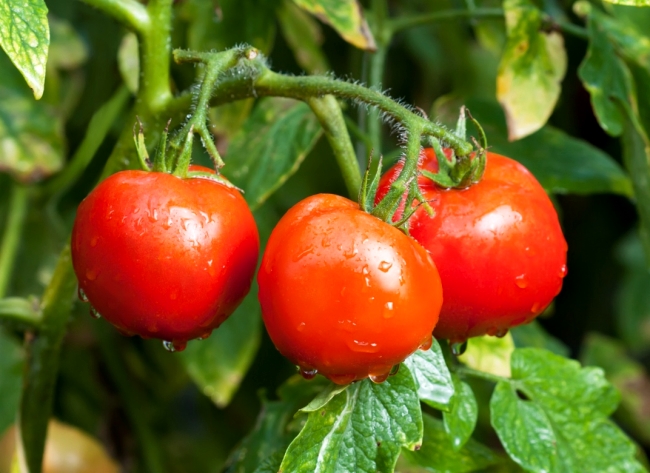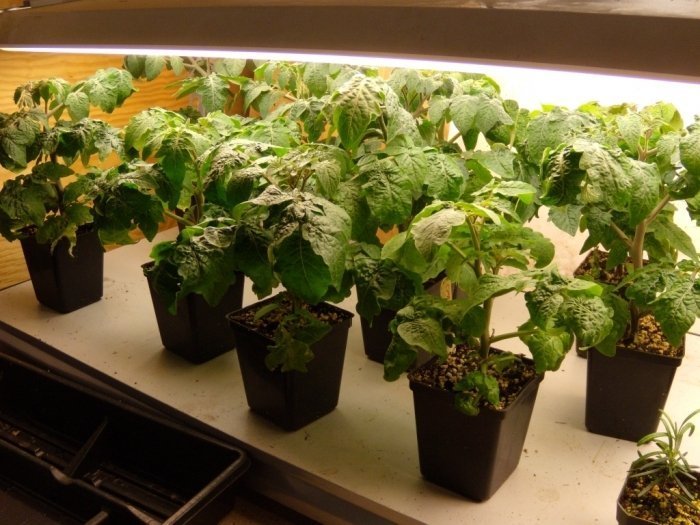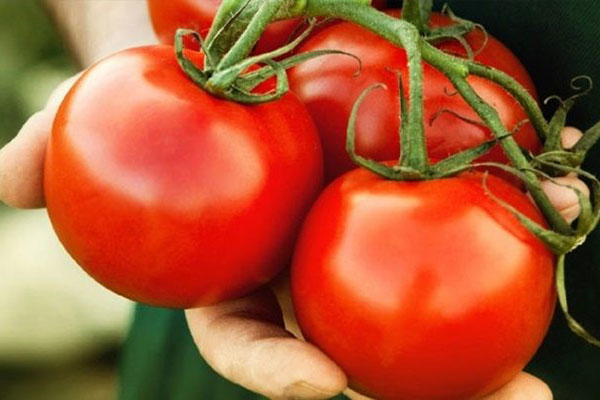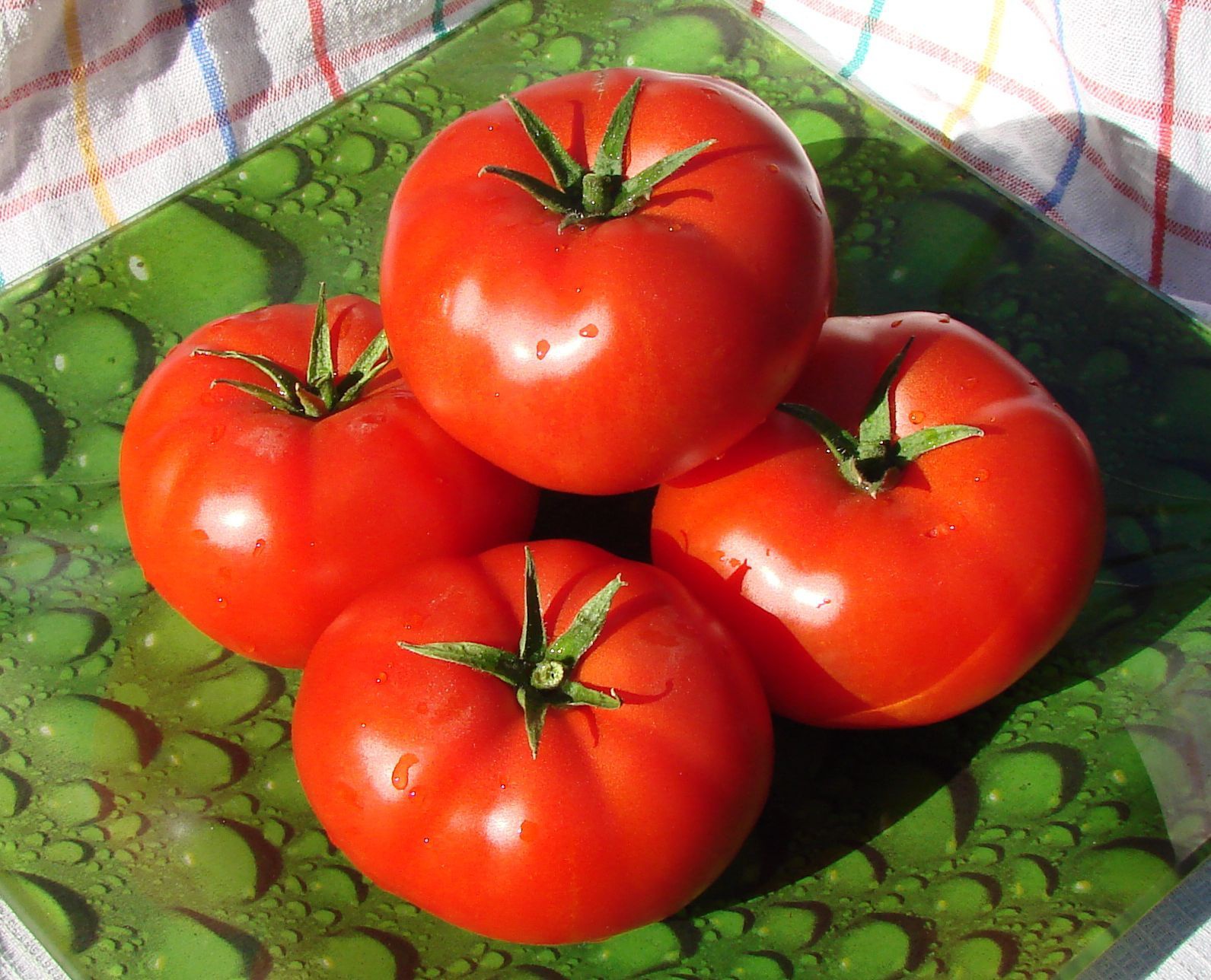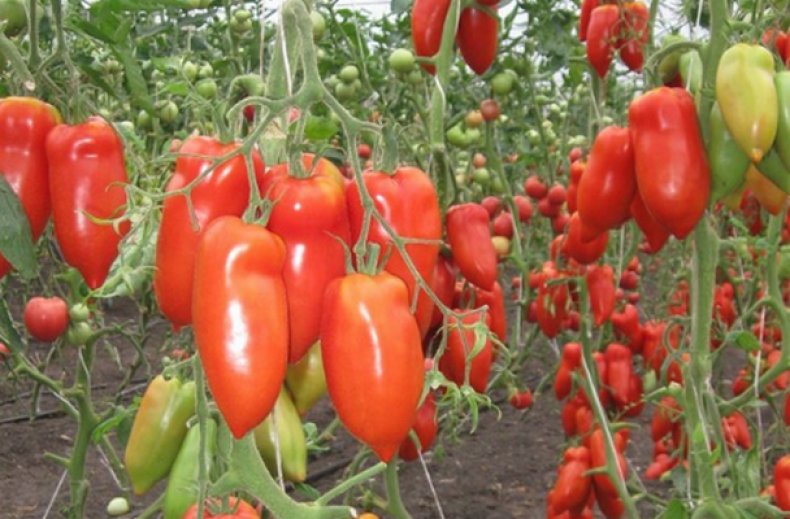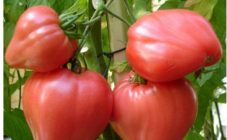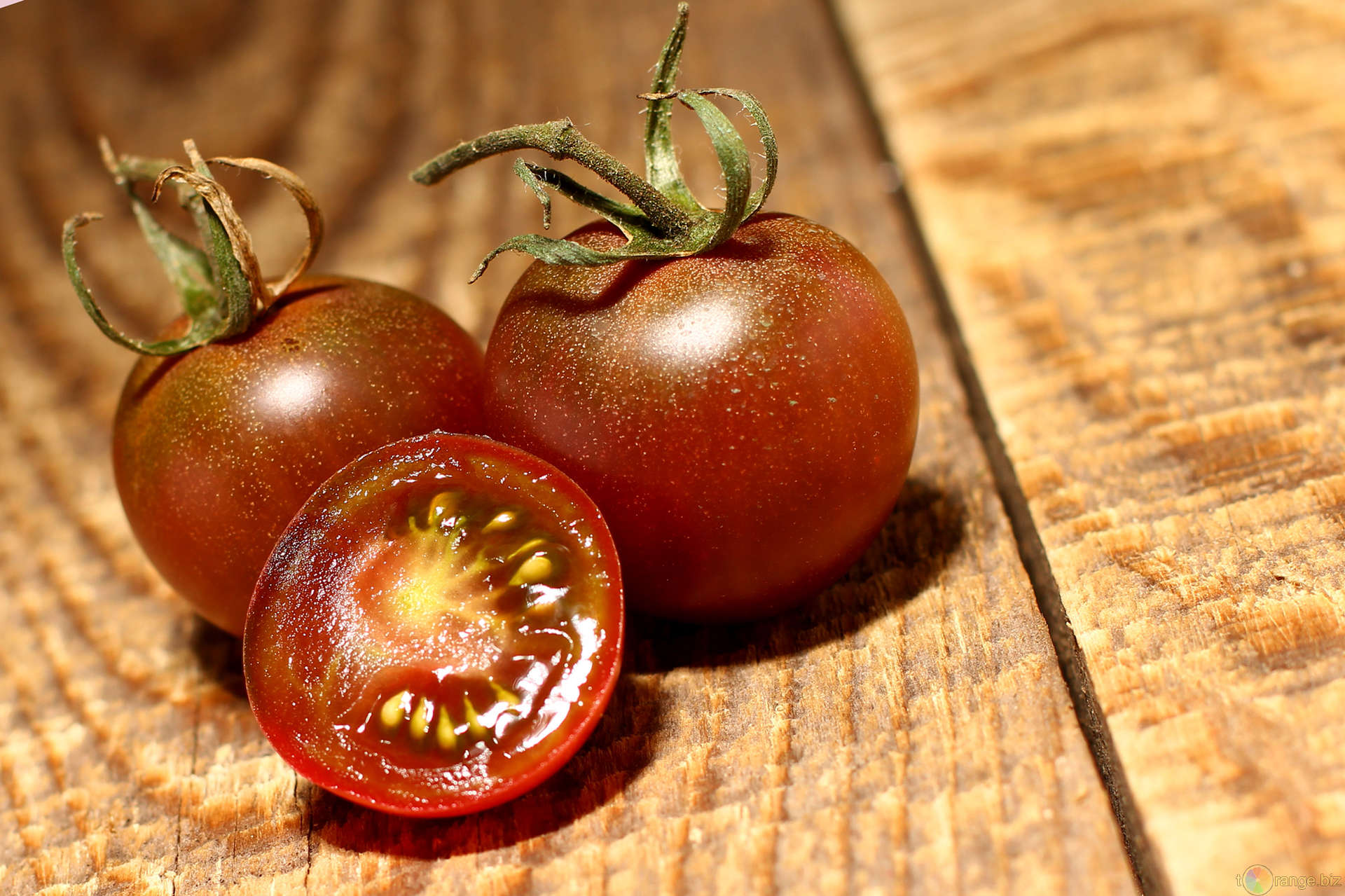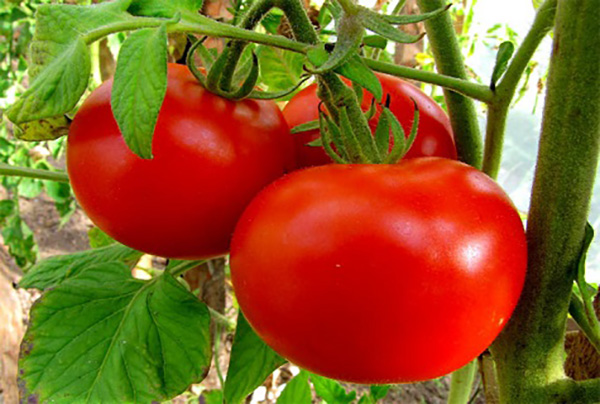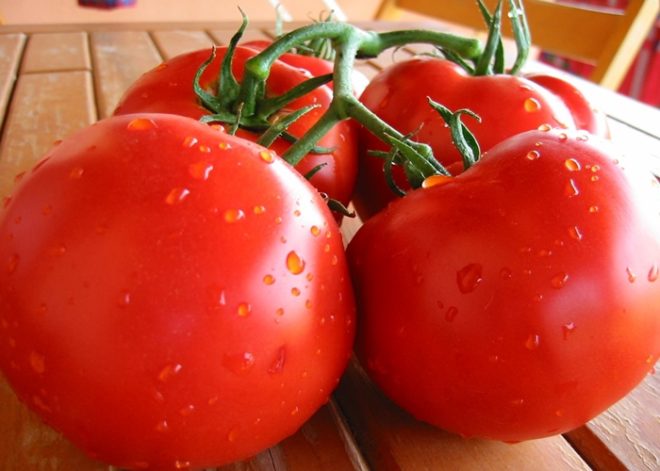Content:
The preservation of traditional methods of growing tomatoes is associated with such varieties as the “Dubok” tomato. Dubok began its history in the early 2000s. The variety of domestic selection quickly gained popularity among Russian gardeners due to its unpretentiousness and productivity, as well as ease of care. So, we will consider the advantages of Dubok tomatoes, description and characteristics of the variety, presenting in all details.
General characteristics of the variety "Dubok"
Tomatoes "Dubok" belong to the determinant varieties of mid-early ripening. The period from planting to full maturity is 85 to 100 days.
The variety is not hybrid and does not have hybrids created on its basis.
Suitable for growing in a garden bed, under a film cover, as well as at home and on a balcony.
The yield reaches 8 kg from one square - 4 bushes.
The tomato bush does not belong to the standard, its height is no more than 60 cm. The plant is formed into one stem.
The thick stem does not require support and easily withstands a not very large weight of the fruit, while the bush does not differ in great branching.
The foliage is medium in size, dark green in color, slightly bumpy, with slight pubescence.
The first inflorescences are formed in the 6 leaf phase, above it, and the next ones - through the leaf. The flowering period is in June, early July. The variety is bee-pollinated.
Fruits are bright red in color, flat-rounded, with little pronounced ribbing. Ripe fruit weight - no more than 100 grams.
Tomato peel is dense, resistant to cracking. The pulp is loose, abundant, with a small content of seeds. The taste of tomatoes is sweetish with a characteristic sourness, but without pungency.
Positioned as a salad variety, at the same time suitable for preservation.
Features of the variety
Tomatoes "Dubok", a description of which the seed producer gives a short but capacious description, have a number of advantageous features:
- Frost resistance;
- Formation in one or two stems, the stem is strong, firm;
- Does not require pinning;
- Resistant to disease;
- Does not form barren flowers;
- Growing at home or on the balcony, it is necessary to artificially pollinate tomatoes or use the drug "ovary".
Agrotechnics
One of the key advantages of this tomato is its simplicity of agricultural technology. But even, despite the unpretentiousness of the variety, a number of simple rules of agricultural technology must be observed.
"Oak" is grown in the usual seedling way. It is at the stage of growing seedlings that it is important to be scrupulous about agricultural technology in order to get strong seedlings.
Seed preparation
It is necessary to prepare seeds for planting no later than March 15th. Before planting, they must be kept in a weak manganese solution - no more than 20 minutes. Then rinse under a slight pressure of running water.
Soil preparation for seedlings and planting seeds
It is better to buy soil in the store. An already prepared substrate should be disinfected by calcining or simply doused with boiling water. In order not to torment the seedling with transplants, it is better to place the substrate in separate pots, in which we plant seeds for half a centimeter, sprinkle it with earth, but do not tamp the soil. For better germination, the pots should be placed under plastic or glass.
The room temperature should be at least 20 degrees, otherwise the seedlings will have to wait a long time. Even before sprouts appear, the soil should be fertilized with mineral fertilizers, for example, "Azofoskoy" or "Superphosphate". Seedlings appear in a week, and when two leaves appear, a pick must be made.
Seedling care
When the first sprouts appear, it is important to provide additional lighting. It is recommended to use phytolamps. In the formation phase of a 2-3 petal, it is necessary to add another mineral dressing. Watering the seedlings should be not very plentiful, it is enough 1 time in three days, if the temperature outside decreases, then 1 time in 4 days.
Top dressing is carried out every 15 days. Waterlogging of the soil should not be allowed, but "drought" is contraindicated for tomatoes.
In private homes, the first enemy of tomato seedlings is two-tails. They penetrate the soil and eat the roots of the seedlings, and the stem often suffers. Insects are active at night, less often during the day. You can escape from them with simple devices. At night, the seedlings can be covered with plastic bags or caps made of gift film, the latter should be attached to the pots with rubber bands for money.
Additional protection will be provided by cotton wool dipped in vinegar or ammonia, which must be laid out near the pots with seedlings.
Preparing seedlings for planting in the ground
To improve the survival rate of seedlings, it is necessary to harden the tomatoes. This should be done gradually. First, put the pots with seedlings for 5-10 minutes near the window, you can slightly open the window. Towards the end of April, seedlings can be taken outside at the same time. In May, the time can be increased to 20-35 minutes.
Planting seedlings in open ground
The place for planting tomatoes should be sunny, elevated, with fertile loose soil. They are planted in the ground, depending on the region of cultivation, at a time when the last cold and night frosts have already passed. In Siberia and the Urals - not earlier than June 15.
2-3 days before planting seedlings, it is necessary to prepare the beds: dig up, loosen, water, and also apply mineral fertilizers.
No more than 4 bushes can be planted per 1 square meter. During planting, one scoop of wood ash or peat can be added to each hole. Planting seedlings should be done carefully, without damaging the root system.
After planting, pour 0.5 liters of water at the root.
Outdoor tomato care "Dubok"
After rooting the seedlings, it is recommended to form a bush into one, at most, two main stems. A garter or support is not required, but it can be installed, especially during fruit ripening. The bushes are not particularly branched; mulching can be carried out in cold and humid summers.
Experienced gardeners recommend picking tomatoes that have begun to turn pink when the first fruits begin to ripen, this will accelerate the growth of other fruits.
Tomatoes do not require abundant watering even during the growing season and flowering. Drying should also be avoided. Watering is best done in the evening, but not very abundantly. It is better to water at the root with a liter of water per bush.
Frequent feeding is also not necessary. Two times per season is enough: during the rooting of seedlings in the open field and during flowering.
Pest and disease control
The description of the Dubok tomatoes indicates their resistance to the main diseases that tomatoes are often susceptible to. Late blight is the most troublesome. So, if in the previous season the planted tomatoes suffered from this ailment, then the place of their planting must be treated with insecticides in the fall. If there was no autumn processing, then this should be done when the last snow melts. After the ground warms up a little, you should add "Superphosphate", as well as potash fertilizers. A week before planting seedlings, you can process the land with nitroammophos.
This variety does not suffer from aphids, spider mites, but two-tails can cause significant harm.In general, these insects should be controlled throughout the area with pesticides and insecticides. Bordeaux mixture and boric acid are effective.
It's also important to keep your garden clean by removing debris and doing regular weeding.
Advantages and disadvantages of Dubok tomatoes
Unlike hybrid varieties, Dubok tomatoes do not need numerous additional fertilizing and special care. At the same time, the variety does not produce large fruits, which hybrid and semi-hybrid varieties can boast of.
So, the range of key advantages can be formed as a list:
- Unpretentious care;
- Frost resistance and the ability to easily endure the difference in summer temperatures and cold snaps at night;
- Resistance to powdery mildew, late blight and a number of other diseases.
- Amicable ripening of fruits, it is also noted that on the bush tomatoes turn red faster than in hybrid varieties;
- Tomatoes tolerate transportation well and can be stored for a long time;
- Excellent taste, delicate aroma and versatility.
Among the special advantages, gardeners with experience in growing this variety note that the smell of the greenery of these tomatoes scares away harmful insects: aphids, cabbages.
Among the few disadvantages of this variety are the following:
- Low weight of fruits, their maximum weight does not exceed 110 grams;
- Despite the unpretentiousness in care, it is quite pretentious to neighboring crops: dill, lettuce, strawberries, cucumbers can become good neighbors; it will not tolerate the neighborhood with potatoes and bell peppers;
- In a rainy summer, sourness prevails in the taste of tomatoes.
Concluding the description of Dubok tomatoes, it is worth noting that among the low-growing varieties, this is one of the most popular. The tomato is great for regions with cool climates and changeable summers. Even in cold and rainy summers, the variety demonstrates productivity, amicable ripening of fruits and the absence of phytophthora on tomatoes.
The hostesses also note the culinary versatility of the variety. Tomatoes are great for sauces, canning, and when eaten fresh, they delight with their amazing aroma and unsurpassed taste.
